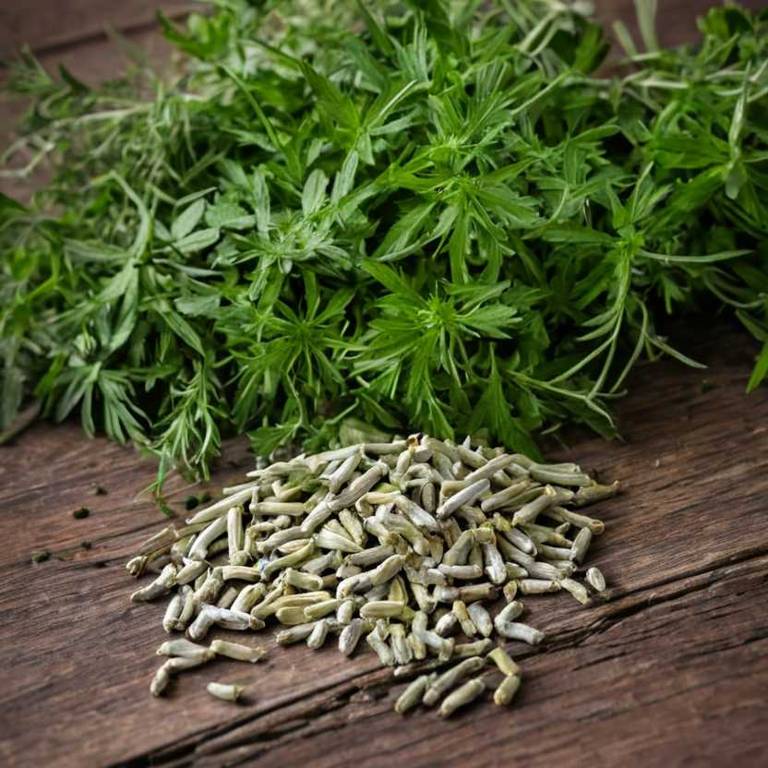10 Best Chamaemelum Nobile Preparations

The best medicinal preparations of Chamaemelum nobile are teas, decoctions, tinctures, oils, and essential oils, each offering unique benefits for health and wellness.
Teas made from dried flowers are commonly used to soothe digestion and reduce inflammation.
Decoctions involve simmering the herb to extract its more potent compounds, often used for stronger therapeutic effects.
Tinctures provide a concentrated form of the herb, ideal for targeted use.
Oils and essential oils derived from the plant are valued for their calming properties and topical applications.
These preparations highlight the versatility of Chamaemelum nobile in traditional and modern herbal medicine.
Below there's a list of the 10 best herbal preparations of chamaemelum nobile for medicinal purposes.
1. Teas
Chamaemelum nobile teas is commonly used to relieve digestive issues, reduce inflammation, and promote relaxation.
It is often employed to treat ailments such as indigestion, bloating, menstrual cramps, and mild anxiety. The bioactive constituents responsible for its medicinal properties include flavonoids, terpenoids, and essential oils, which have anti-inflammatory, antispasmodic, and mild sedative effects. These compounds contribute to its ability to soothe the gastrointestinal tract and calm the nervous system.
Additionally, it contains compounds with antioxidant properties that support overall health and immune function.

2. Decoctions
Chamaemelum nobile decoctions is commonly used to treat digestive issues, inflammation, and respiratory conditions.
This herbal preparation is often employed for ailments such as indigestion, stomach ulcers, and bronchitis due to its soothing and anti-inflammatory properties. The most common medicinal uses include alleviating gastrointestinal discomfort, reducing inflammation in the respiratory tract, and supporting the immune system. The bioactive constituents responsible for these effects include flavonoids, sesquiterpene lactones, and volatile oils, which exhibit antimicrobial, anti-inflammatory, and antioxidant activities.
These compounds work synergistically to provide the therapeutic benefits associated with Chamaemelum nobile decoctions.

3. Tinctures
Chamaemelum nobile tinctures is commonly used to treat digestive issues, respiratory conditions, and skin irritations.
These tinctures are frequently employed for ailments such as indigestion, nausea, coughs, and eczema. The bioactive constituents responsible for its medicinal properties include flavonoids, sesquiterpene lactones, and volatile oils. These compounds possess anti-inflammatory, antimicrobial, and antispasmodic effects.
Chamaemelum nobile tinctures are also valued for their calming properties, making them useful in managing stress and anxiety.

4. Oils
Chamaemelum nobile oils is commonly used to treat digestive issues, skin conditions, and respiratory ailments.
It is often employed to alleviate symptoms of indigestion, bloating, and nausea due to its carminative properties. The oil is also applied topically to reduce inflammation and soothe skin irritations such as eczema and psoriasis. Additionally, it is used in aromatherapy to ease stress and promote relaxation.
Common bioactive constituents include chamazulene, bisabolol, and sesquiterpene lactones, which contribute to its anti-inflammatory, antimicrobial, and analgesic effects.

6. Creams
Chamaemelum nobile creams is commonly used to treat skin conditions such as eczema, psoriasis, and minor burns due to their anti-inflammatory and soothing properties.
These creams are also often applied to reduce pain and inflammation associated with arthritis and other inflammatory disorders. The most common medicinal uses include alleviating skin irritation, promoting wound healing, and providing relief from muscle aches and joint pain. The bioactive constituents responsible for these effects include essential oils like chamazulene, flavonoids, and sesquiterpene lactones, which have anti-inflammatory, antimicrobial, and antioxidant properties.
These compounds work synergistically to enhance the therapeutic benefits of the herbal preparation.

7. Mucillages
Chamaemelum nobile mucillages is commonly used to treat digestive issues, inflammation, and skin conditions due to its soothing and healing properties.
The most common medicinal uses include alleviating symptoms of irritable bowel syndrome, reducing inflammation in the gastrointestinal tract, and promoting wound healing. It is also used for respiratory conditions such as coughs and bronchitis. The bioactive constituents responsible for these effects include mucilage, flavonoids, terpenoids, and essential oils, which have anti-inflammatory, antioxidant, and demulcent properties.
These compounds help to coat and protect mucous membranes, reduce irritation, and support the body's natural healing processes.

8. Capsules
Chamaemelum nobile capsules is commonly used to treat digestive issues, inflammation, and stress-related conditions.
These capsules are widely utilized for their calming effects and to support gastrointestinal health. The most common medicinal uses include alleviating symptoms of indigestion, bloating, and irritable bowel syndrome, as well as reducing inflammation in conditions like arthritis. Bioactive constituents such as flavonoids, sesquiterpene lactones, and volatile oils contribute to its anti-inflammatory, antioxidant, and mild sedative properties.
These compounds work together to provide the therapeutic benefits associated with Chamaemelum nobile.

9. Oinments
Chamaemelum nobile oinments is commonly used to treat skin conditions, inflammation, and minor wounds due to its anti-inflammatory and antimicrobial properties.
These oinments are frequently applied for ailments such as eczema, psoriasis, and dermatitis, as well as for soothing muscle aches and joint pain. The bioactive constituents responsible for these effects include sesquiterpene lactones, flavonoids, and essential oils, which exhibit anti-inflammatory, antioxidant, and wound-healing activities. Additionally, the presence of chamazulene contributes to its calming and anti-allergic effects.
This herbal preparation has been traditionally used in herbal medicine for its soothing and therapeutic benefits on the skin and musculoskeletal system.

10. Syrups
Chamaemelum nobile syrups is commonly used to relieve respiratory symptoms, such as coughs, bronchitis, and asthma, due to its soothing and anti-inflammatory properties.
These syrups are also used to alleviate digestive issues like indigestion and bloating, and to support the immune system during colds and flu. The most common medicinal uses include treating respiratory tract infections, gastrointestinal discomfort, and as a mild sedative for nervous system support. The bioactive constituents responsible for these effects include flavonoids, terpenoids, and essential oils, which possess antioxidant, anti-inflammatory, and antimicrobial properties.
Additionally, the presence of mucilage contributes to its demulcent action, helping to soothe irritated tissues in the respiratory and digestive tracts.
